The First Step Act … and Second Chances
It’s not often these days that I applaud the actions taken by the federal government. But passing a prison reform bill was a good thing. Hooray.
Well, it’s a start, at least.
Yes, I’m pleased that cry-babies politicians put aside the foot-stompin’, name-callin’, and whining and pouting to actually work toward solving the huge problem of overcrowding in federal prisons, and the reduction of recidivism, by passing The First Step Act.
With about 181,000 imprisoned people incarcerated in federal prisons, in addition to the 2.1 million locked up in jails and state prisons throughout the country, it’s certainly no secret that something’s not working.
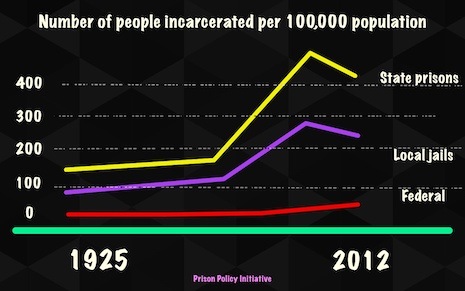
The First Step Act
IN THE SENATE OF THE UNITED STATES—115th Cong., 2d Sess.
S. 3649
“To provide for programs to help reduce the risk that prisoners will recidivate upon release from prison, and for other purposes.” ~
Let’s address recidivism …
… and why I think it occurs so often. First of all, I have many years of experience working in both corrections and in law enforcement, which means I’ve seen the system in action, from all sides. I’ve also owned a business where I employed a few former inmates, men who’d received prison sentences resulting from my investigations. Ironic, huh? Yes, I honestly believe in second chances and I believe in reducing recidivism.
Believe it or not, some former prisoners would absolutely love to lead normal and productive lives once they’re released. They’d paid their dues and they want to do right. They made a mistake, paid for it, and would like to move on.
The Deck is Stacked Against Them
What do former prisoners face upon their release? (these may vary depending on location)
1. They must, on a regular basis, check in with a probation or parole officer.
2. They must have an established residence.
3. Many drug and sex offenders must register with the local police, advising officials where they’ll be residing and working.
4. They must maintain employment (in some areas this is a discretionary requirement imposed by the court).
5. They’re required to complete a monthly report detailing their earnings, address changes, if any, employers name (probation officer will visit the job site and home), drug offenders must submit to urine testing, all must submit vehicle information, record of purchases (many probationers may not possess credit or debit cards), and they’re encouraged to further their education (This is a bit of a catch-22 for some since drug offenders may not receive grants to attend college. Murderers, yes, but drug offenders, no).
Employment is mandatory but some companies refuse to hire people who’ve been convicted of felonies … any felonies.
A vast number of employers absolutely will not hire felons and, as I stated above, drug offenders are not eligible for student loans. In fact, many felons are legally banned from working in certain professions, such as:
- airport security screener
- armored car crew member
- bank teller
- child care provider
- delivery driver
- health care positions with direct patient contact
- public safety officer
- residential installers
- apartment or condo maintenance
- jobs that require handling money
- Realtor
- Some volunteer programs refuse to accept felons (any felon)—nature programs, animal shelters, libraries, etc.
Even when a felon finds a job he is subject to a list of restrictions, including (this is only a partial list, and it may vary from area to area):
- Agents /officers must be allowed to visit worksite and/or speak with a supervisor to discuss client’s performance, progress, and accountability
- Cannot work in a position that serves alcohol
- Cannot work with minors
- Cannot work with vulnerable adults
- Employment must be within or close to a supervision district so that agents may visit the worksite
- Not allowed to use or have contact with devices that host a computer modem (i.e. any device that can access the Internet)
- Cannot travel outside area or state (affects delivery drivers)
A few professions do hire convicted felons, but the list is short. And, this is still entirely up to the company. Some do not employ those who’ve been convicted of crimes … any crimes.
Professions sometimes available to convicted felons:
- Warehouse work
- Maintenance and janitorial positions
- Food service (no alcohol)
- Production and manufacturing
- Assembly
- Construction
- Landscaping
In addition, many convicted felons are banned from living in publicly assisted housing (section 8), so they turn to the streets. Right back to the places where their troubles started.
No job and no housing
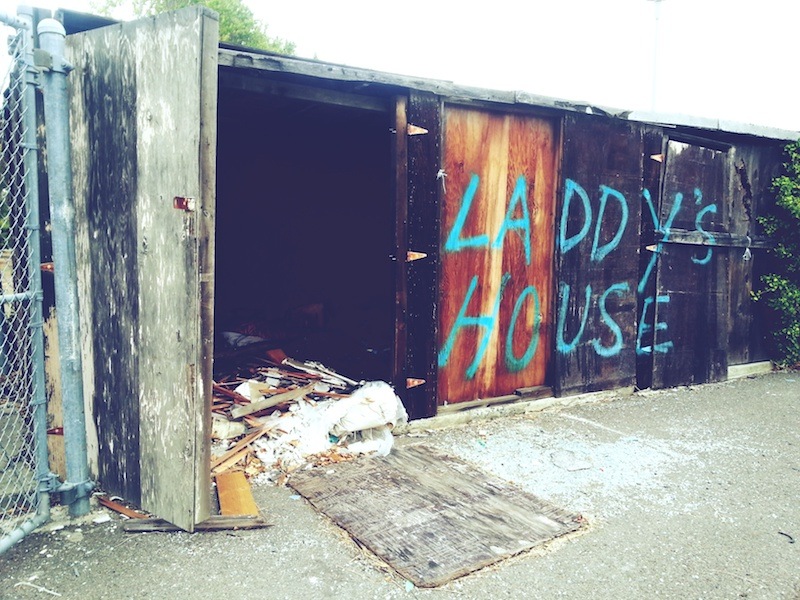
So you see, without a job and with the limited occupations to choose from, and without housing and educational opportunities, it’s darn tough for a former prisoner to make it on the outside.
To top it all off, the convicted felons never actually “pay their debts to society.” The stigma of being a “convicted felon” hangs over their head for life. This is especially true for those who were convicted of federal offenses. State prisoners may receive relief (pardon and/or restoration of rights) from the governor’s office.
Federal inmates may ONLY receive restoration of rights, etc. from the President of the United States.
IF, and that’s a BIG IF, one of the tens of thousands of former federal inmates wants to have the president’s pardon attorneys review their application, it’s almost a must that they retain a private attorney to represent them and to submit the forms. A typical fee to assist with a federal pardon application is approximately $5,000 and up. And, chances of the typical Joe or Jane receiving a presidential pardon are about as likely as me beating out George Clooney for a starring role in a movie. The chances of doling out a minimum of five-thousand bucks AND topping George Clooney for the next big role is, well, you get the idea.
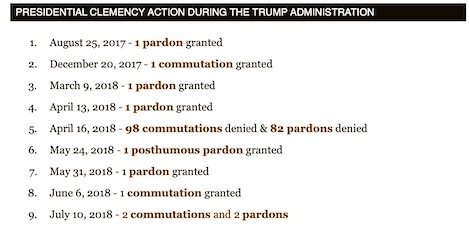
To read the process and view the Clemency and Pardon forms, click here.
Some states allow convicted felons to vote in elections (others do not).
Still, felons, even one-time first offenders convicted of minor, non-violent felonies lose their right to own firearms and other weapons, their right to vote, student loans, housing, etc. And these restrictions are for life.
Second Chances!!
Wouldn’t it make sense to give the non-violent offenders a second chance by removing the “convicted felon” status after, say, 10 years of living a productive, crime-free life. At least then they’d have the opportunity to return to school, live in better neighborhoods (away from criminal activity), find a decent job that would help support their families and take better care of their children, who, by the way, also suffer by being forced to live in poor conditions.
Having a second chance and goals to work toward could be part of the solution to the “prison problem” in this country. Now, I’m not talking about hardcore career criminals and repeat offenders. Nor am I including violent offenders. Most of those thugs need to remain behind bars for as long as we can keep them there. And I certainly don’t believe that every inmate would take advantage of the opportunity if presented to them. But there would be many who would work hard to achieve the goal and finally be able to put the mistake behind them for good.
If this helped keep just a small portion of the recidivists out of prison, the results could be huge. Families could remain together, children would grow up with two parents in the home, employers might find top-notch employees, the former inmates could become better educated and productive members of society, and taxpayers would save approximately $30,000 per year per inmate. Not to mention that instead of costing taxpayers, the non-recidivist would become a taxPAYER.
Anyway, that’s my two cents on the matter. What do you think? Do you approve of The First Step Act? Is is enough? Too much? Should nonviolent offenders be given a second chance?
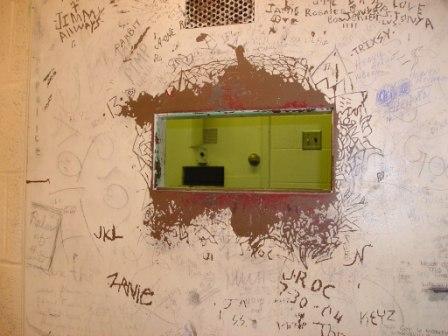
Of course, there is the issue of private prisons that have contracts with the government … contracts that promise a minimum number of inmates will be sent their way. We must also remember that the private prisons are a big, money-making industry with stockholders.
And then there’s the food industry that makes a bundle off the prisons. And the construction companies, the jobs for officers, stock brokers medical staff, administration, the vehicle contracts, the weapons contracts, dog food (canines), condiment sales (I once sat next to a woman on a plane who was on her way to a huge nationwide prison food convention. She was in charge of condiment sales to prisons and jails—packets of mustard, ketchup, and mayonnaise, along with napkins, and sporks—a multi-million-dollar industry)
Inmate phone calls are EXPENSIVE!
Let’s not forget the prison phone systems, where a collect call can go for fees as high as nearly $300 for just one hour of conversation. Think about it for a second. A call for a kid’s birthday, a mother’s sick, etc. $300 for an hour of family time is a tough expense for most families.
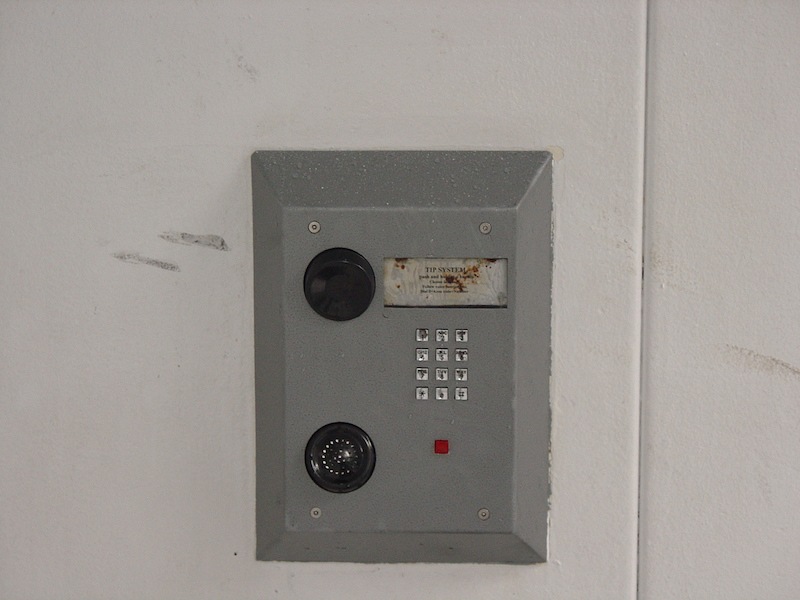
A portion of that whopping phone bill goes back to the prison in exchange for a contract with the provider. Again, it is the family who shoulders this burden since inmates don’t earn anywhere near enough money to cover the expense, yet, officials encourage strong and regular family contact.
Anyway, you get the idea.
A very happy prisoner. I asked why the big smile. Her reply was, “Things could be worse. At least I’m alive and healthy.” Notice the blue phone and its cord at the right side of the photo. Collect calls only.
Life on the inside
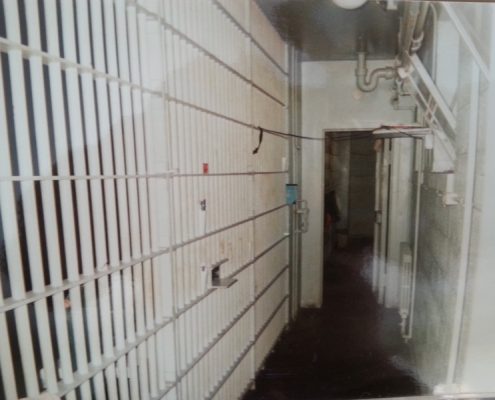
Above and below – inside a small county jail where conditions were truly deplorable.
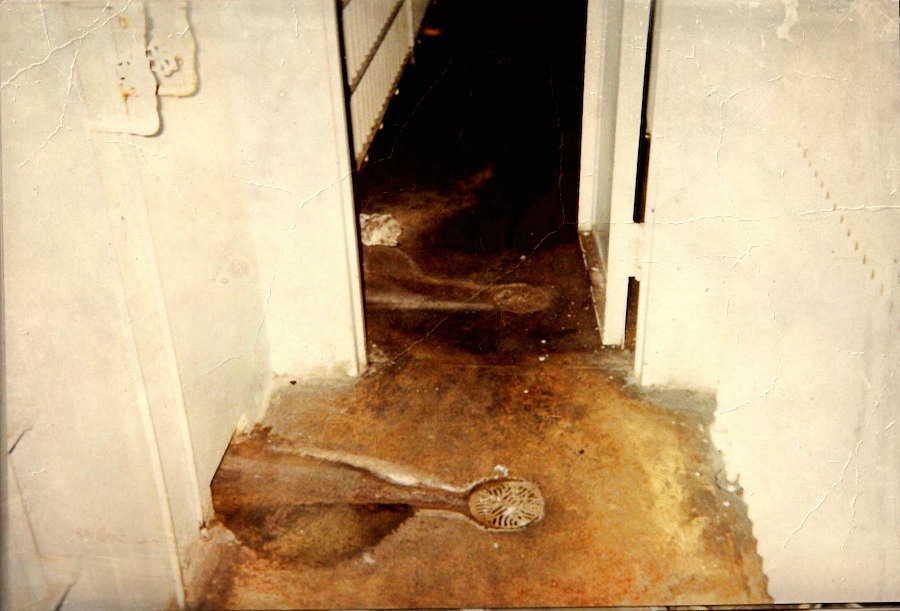
Showers drained into the corridors.
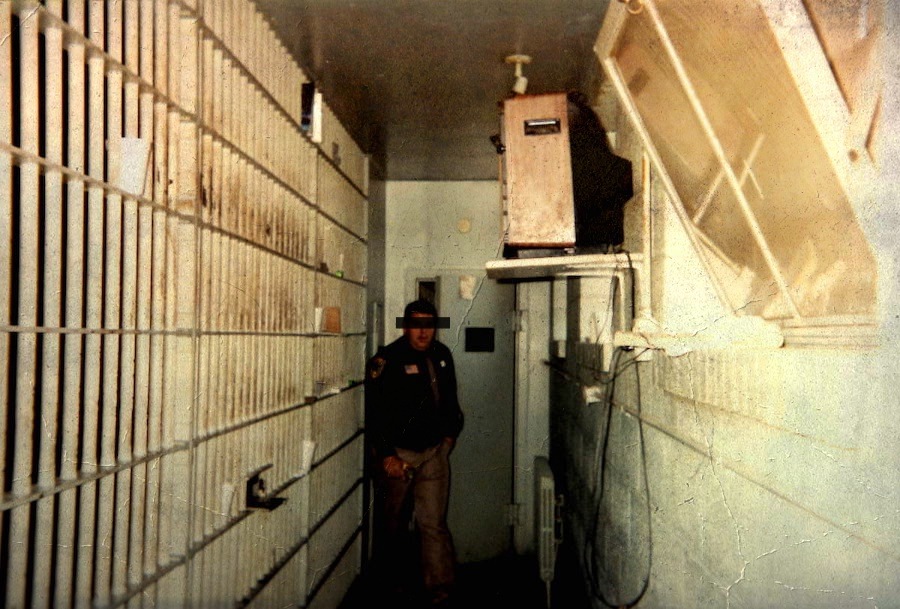
Jailer entering corridor.
Jail Pods
Above – Inside a shipping container “pod” that was converted into a dormitory-style jail cell. This pod is located inside a parking garage outside an overcrowded county jail.
Below – Space between two modules serves as the recreation yard. Absolutely no sunlight to be found, anywhere. Nothing but concrete, sewer pipes, exhaust fumes, and prisoners.
Below – In this county jail, prisoners are brought to these small rooms where they “visit” with family members seated on the opposite side of the window. The family’s room is a mirror image of the inmate’s visiting room. The view below is from the inmate’s side of the glass.
Overcrowding is a big issue within some prisons and jails. As an answer to their growing space problem, this county jail (below) installed steel beds in the hallways, outside the already packed jail cells.
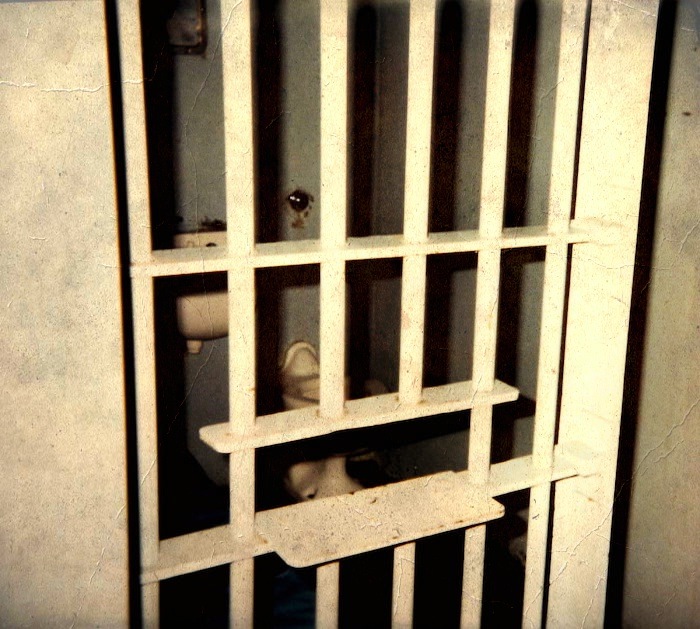
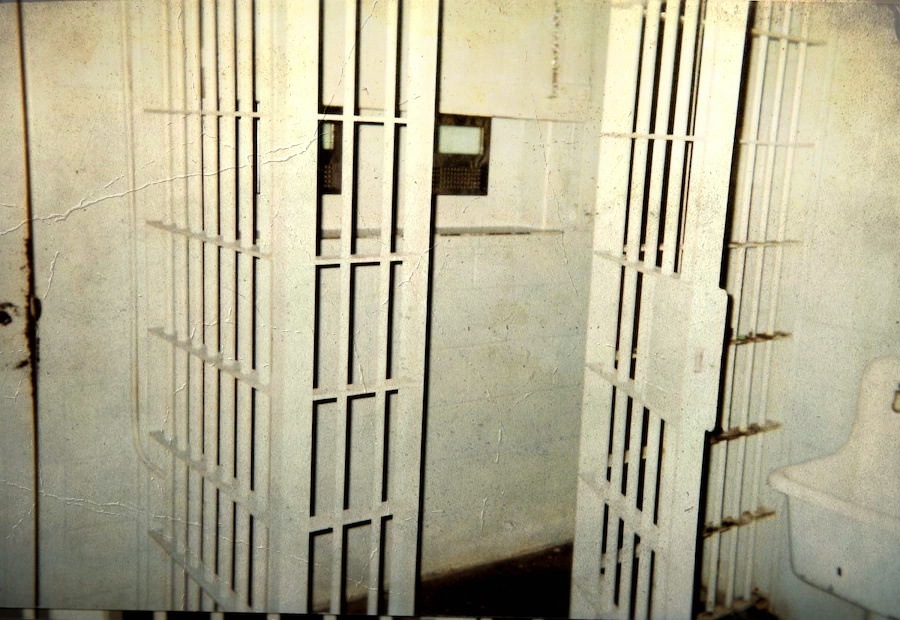
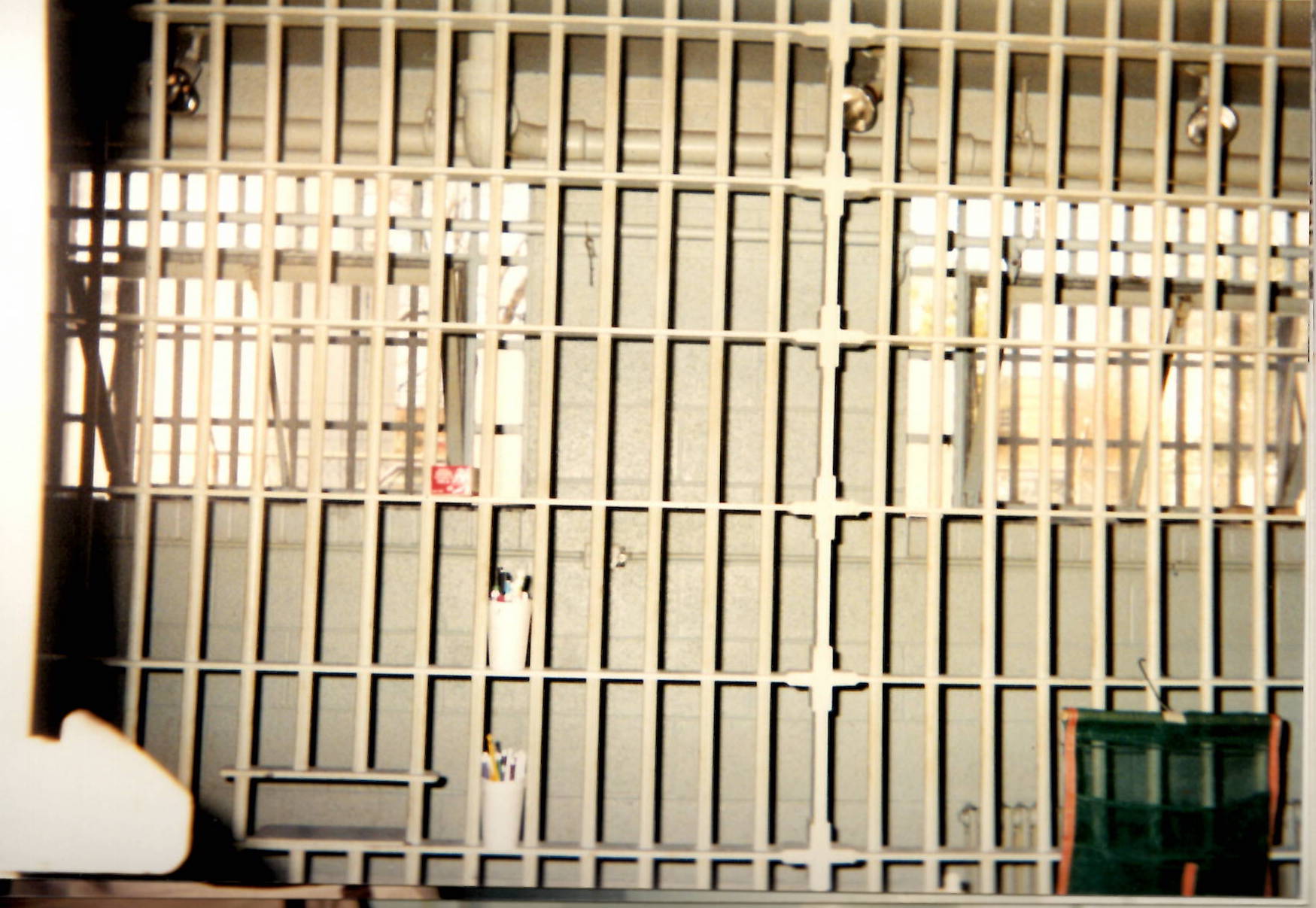
Looking out from inside the trustee cells.
Hallways and corridors were narrow, making for dangerous conditions for the jailers. The jail was heated by steam (boilers) and radiators were there, but scarce. There was no heat inside the cells. And, there was no air conditioning whatsoever. The only airflow came from small widows. Here, you can see one of those windows (top left corner), open and tilted in toward the cells. The electrical cord is connected to a portable TV sitting on the wonky shelf, also at top left next to the window.
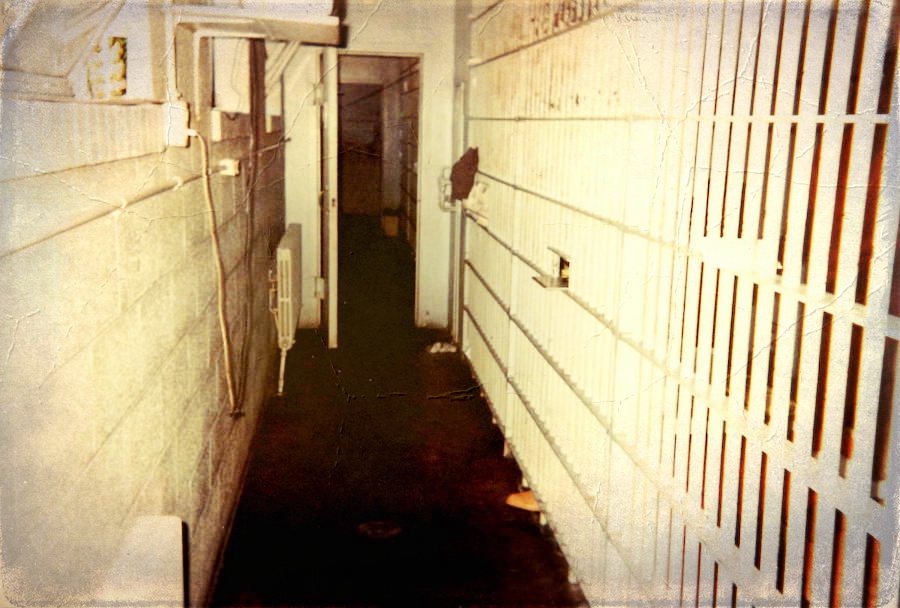
Narrow corridors are dangerous!
Makeshift antenna controls were fashioned from string or wires. Not allowed, but prisoners will be prisoners …

Wires to rotate rabbit-ear antennas from side to side to help receive a better picture. No cable.

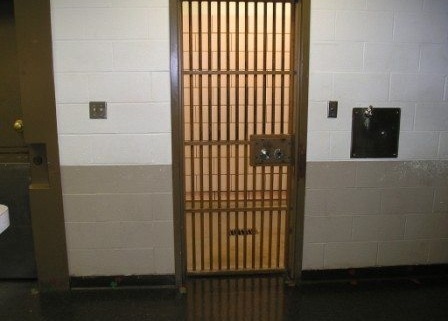


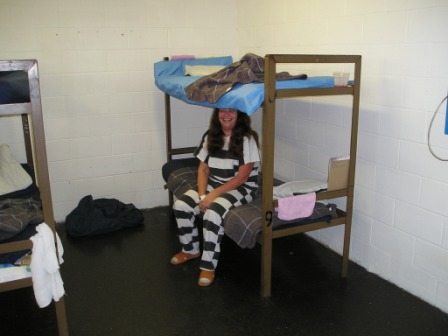
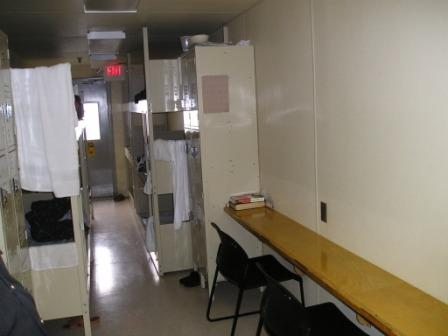
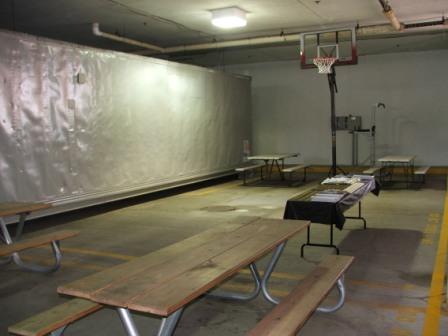
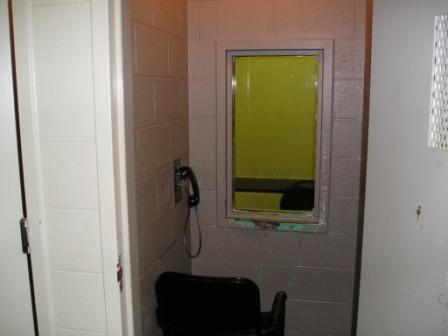
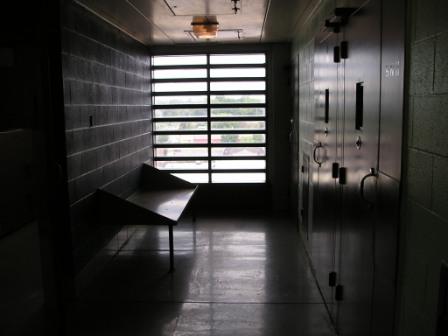





Merit, I’ve been to county jails in California (not on the prisoner side), in rather large metro areas, and while this looks like a decade old, it hasn’t changed much. One facility I’ve been to was built in the 1960s. There are next to no real outside windows at all, corridors are narrow as all get out, and it becomes impossible to navigate the hallways without arrows telling you where to go. It’s almost a death trap for prisoner and CO alike. Everyone knows it needs improving, but the politicians, local or state, don’t want to spend money to fix it.
It’s a first step. The burden we place on convicted felons is unreasonable. I heard a report this afternoon that some states are looking at similar changes in their laws. That gives me some hope. We need to eliminate the profit motive and help people return to the community.
“Catch 22” does not begin to describe this. If we’d set out to intentionally create a system to guarantee failure we couldn’t have done a better job. I am probably more on the side that the First Step Act doesn’t go far enough. We could learn from countries like Denmark, where non-violent offenders usually serve time in what they call “open” prisons. This means inmates can still attend school and even keep part-time jobs. Only the most violent offenders, those deemed a threat to society–psychopaths, terrorists, prior escapees–are kept on continual lockdown. Rehabilitation doesn’t start upon release, it’s an ongoing process. And I’m curious about the vintage of the small county jail photos. Hopefully those aren’t current?!
Thanks for another thoughtful piece, Lee.
Lee, I think it would be cool if you would consider an article on Prison Service Dog programs. I have a Service Dog trained at Crossroads Corrections Facility in Montana and could connect you to the director.